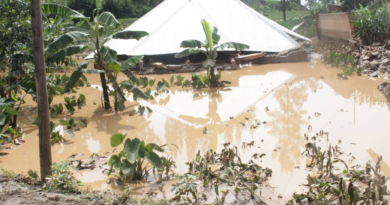Africa Protected Areas Congress: MAVA presents the legacy of 25
years of conservation commitment in West Africa

today in Kigali, Rwanda and will last until 23 July 2022. On this occasion, the MAVA
Foundation, a sponsor of the event, intends to highlight its impact on nature conservation in
Africa for over 25 years.
Since the spark ignited by its founder Dr. Luc Hoffmann in 1994 with the mission to
conserve biodiversity by funding, mobilising and strengthening the conservation community,
the MAVA foundation has supported more than 1,570 projects in the world. In West Africa,
the Foundation has made a significant contribution to the success of conservation in several
countries and communities. In total, more than 150 million dollars have been invested to
protect the most important critical habitats for endangered marine species, conserve priority
coastal habitats, prevent and reduce the impact of coastal development activities, contribute
to sustainable fisheries and the reduction of bycatch, support indigenous and community
conserve areas and strengthen the capacities of grassroots conservation organisations.
Over the years, MAVA has not only invested in the protection of the planet’s wild beauty but
also contributed to the creation and institutional development of organizations recognized
today as the behemoths of conservation, including WWF, Wetlands International and IUCN.
MAVA’s participation in the first ever African Protected Areas Congress through a series of
events to be organized in its pavilion in synergy with its partners, as a way of passing the
torch, marks a turning point as the foundation prepares for its closure scheduled for late
2022.
“APAC is the first African congress to be held in Africa, on protected areas in Africa, by
Africans, for Africans. The MAVA Foundation decided to sponsor this congress because we
believe that it is the moment for Africans to identify their priorities and their good practices, to
exchange among themselves and to take the necessary decisions to be able to implement
actions on the ground in order to place protected areas at the center of the discussions on
sustainable development, on the conservation of biodiversity and on the fight against climate
change” explains Charlotte Karibuhoye, Regional Director of the MAVA Foundation for
West Africa.
As MAVA turns its final corner, it leaves behind a vibrant community of conservationists as
stewards of this rich biodiversity. This community represented by key partners such as the
Regional Partnership for Coastal and Marine Conservation in West Africa (PRCM), the
Regional Network of Marine Protected Areas in West Africa (RAMPAO), BirdLife
International Africa and Wetlands International will be present alongside MAVA during APAC
to tell the inspiring story of the Foundation through their achievements.
“MAVA has been key in empowering the BirdLife Africa Partnership in West Africa. We now
have ten BirdLife Partners, and a strong team of experts within the Secretariat, split into 3
offices – Dakar, Accra, and São Tomé. With a cross-cutting strategy for the conservation of
birds and biodiversity, for the benefit of nature and people, we have an advanced and
diverse projects portfolio. Our Partners are involved in the protection of marine, coastal, and
terrestrial landscapes. The APAC is an extraordinary opportunity to share our experience
and put our actions into perspective. We are grateful to our financial partners, and in
particular the MAVA foundation, for entrusting us”, explains Jean-Baptiste Deffontaines,
Head of West Africa sub-regional office at BirdLife International.
During the APAC Congress, the MAVA pavilion will be the perfect place to showcase the
Foundation’s successes in West Africa. A pavilion opening ceremony will be held on
Tuesday 18 July, starting at 14:00, where MAVA will present the lessons from its 25-year
conservation journey in West Africa and detail the program of activities scheduled for the
week.
The expose will also become a platform for MAVA to provide an insight on its transition
journey to ensure that its conservation impact goes beyond 2022.
![]()



